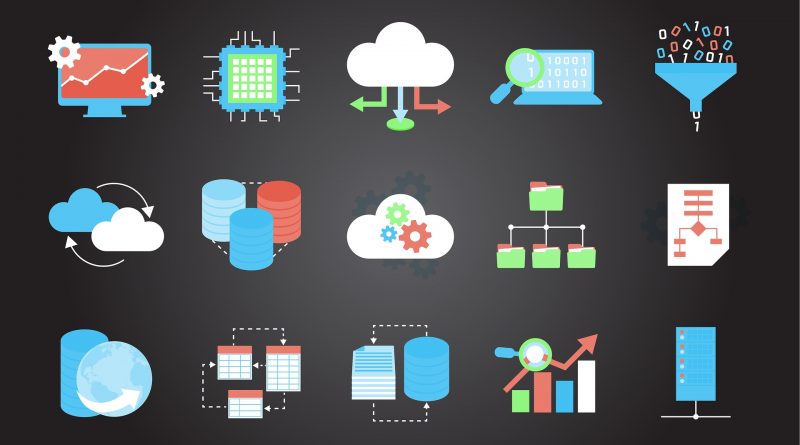Types of web hosting & considerations for your new website.
Types of web hosting & considerations for your new website.
I wanted to very quickly put together a post to outline the types of hosting available for your website The types of web hosting & considerations for your website are all important things to consider. Hosting is often forgotten about, as it sits there in the background as a unesscary service and offers a home for your website to live. Using appropriate hosting is important for your website to ensure you get the very best speed and give your website users the very best experience.
I advise clients they should allocate 30% of their budget to website hosting. In all the examples below, I’m considering small to medium clients in mind and not necessarily Enterprise clients whereby there’s a whole separate post to write!
Working with a web designer, read this. You can read about my thoughts on doing web design on the cheap here, using Worpress here
Shared Hosting
Most people will start off with this type of hosting. It’s usually the default hosting which comes with your domain provider, sometimes offered for free for the first year or offered at very low cost (think £2.99-£6.99 a month). Your website will sit on a server with often thousands of other websites. Whilst this type of hosting is cheap, bare in mind you are sharing your website on a server with other websites you don’t know about – you don’t know how much resource or bandwidth those other websites use and you’re at the mercy to the single server’s capability. If one of those other websites cause the server to go down, your website will be affected also!
| Pro’s | Con’s |
| Cheap | Often large bandwidth & storage limits |
| Easy to Set up | Limited server performance |
| You can usually ‘forget about it’ | Easy to outgrow |
Best for: First time website owners who want something simple and quick, and don’t know how much traffic they will get and also have limited IT knowledge.
VPS (Virtual Private Server)
This is a rung up from shared hosting. You’re still sitting on a server with other websites, but you get your own dedicated resource such as CPU, Storage, RAM and often a dedicated control panel such as cPanel or WHM to bind it all together. Bandwidth allocation is usually higher also. This is often a solid hosting solution for many people as they outgrow their initial hosting requirements. It can cost more, and the onus of administration will be on you, but it can be cost effective long term.
| Pro’s | Con’s |
| Flexible & resilient | Can be expensive |
| Can accommodate most types of site | You’ll need to know what you’re doing |
| Dedicated resource and good performance | Support is often limited. |
Best for: People who have outgrown shared hosting an want a feel of a dedicated server in a controlled environment. They have started to get more traffic and need more performance.
Dedicated Bare Metal Server
This is where you pay a monthly rental for physical bare metal sitting in a rack in a data centre. Your own server. It’ll be connected to a UPS and some form of ‘remote hands’ service whereby it can be powered on and off at your command. Obviously overkill for a lot of people, but if you have a high capacity requirement, or need granular control of the environment for your website with full administrative capability this is the way to go. Companies like Rackspace and D9 hosting amongst others do great dedicated server packages, but they start from a few hundred pound per month, going into the thousands. You’ll be responsible for the entire server, it’s network security and protection, software patches & how it sits on the Internet. For expert users only!
| Pro’s | Con’s |
| Entirely flexible | Expensive |
| High Performance | You’ll need full server management knowledge |
| Install any software you want/need | Usually no support. |
Cloud Hosting
Often hosting companies tend to stick the term ‘cloud’ at the start of all their hosting packages, without those packages actually carrying any of the characteristics of cloud at all. Be mindful of that. A cloud solution means typically you’ll PAYG (usually on an hourly basis) for computing resource from servers, storage, RAM, bandwidth etc. It’s entirely flexible, you can adjust these resources seamlessly usually whilst the server is still on and live, but cloud computing is often complex and expensive. It allows you to spin up infrastructure at short notice, but you really should research first to see if Cloud hosting is for you. Companies such as Microsoft (Azure), Amazon (AWS) and Digital Ocean are companies who spring to mind here.
| Pro’s | Con’s |
| Massively flexible at scale | Hugely expensive |
| Only pay for exactly what you use | You’ll need full server management knowledge |
| Completely customizable at short notice | Support can be patchy, you’ll need to know about infrastructure to get ‘cloud’ hosting. |
Best for: Tech start ups maybe or businesses who want to run online apps, large databases or simply have changing bandwidth requirements week on week.
Top 7 Hosting Tips
Here’s some top ten things to think about before you purchase your hosting
7 – Check your bandwidth and storage allocation. Often cited as unlimited, they rarely are and you’ll pay heavily for going over those limits. Don’t under-estimate how much your website will need in terms of storage & bandwidth and plan accordingly.
6 – Software – ensure that the hosting package you have chosen is compatible with the software you want to run. Often, PHP versions and automated script installers for something like WordPress can be hit & miss. Also ensure you have flexibility to upload files & are aware of any file upload limits.
5 – Support – the mark of any good hosting provider is the support they provide. Be honest about how much support you are likely to need, and check out the companies user forum, chat rooms & self help guides. Are they easy to read? Is the community helpful? Do they use a language you understand? Remember you’ll be in bed with this company for at least a year, so ensure you are comfortable.
4 – Plan changes – ensure you can change your plan mid-contract if your needs change. Check for penalty clauses and what happens if you find you outgrow your hosting. Make sure you read the small print and ensure you are aware of any fee’s for going over your storage or bandwidth limit.
3 – SLA – what happens when something goes wrong? Hosting providers often update their servers, add patches & such like. Make sure you know how you’ll be alerted if they take your website offline and if they do, how long. What is there SLA and read reviews about the provider, and check their historic uptime availability to ensure you pick a stable and reliable hosting provider. Paying a few extra pounds a month to a top tier provider can pay dividends in the long run.
2- Site backups – how easy is it to make backups. Are those backups transferrable to other providers and how easy is it to move away from your provider. Don’t only think about getting into bed with your new hosting provider, think about when you want to sleep with someone else. How easy will they make it for you? Some providers are notorious for making it as complex as possible. Do they do their own backups too? How often? Research this!
1 – Email and Ecommerce options – Does the hosting provider offer these or is it compatible with them? Think if you want to use a contact form on your website, can your web provider offer this? Sounds silly but many still don’t and you can sometimes need to pay extra for these features. The same for the ability to take payment etc.





